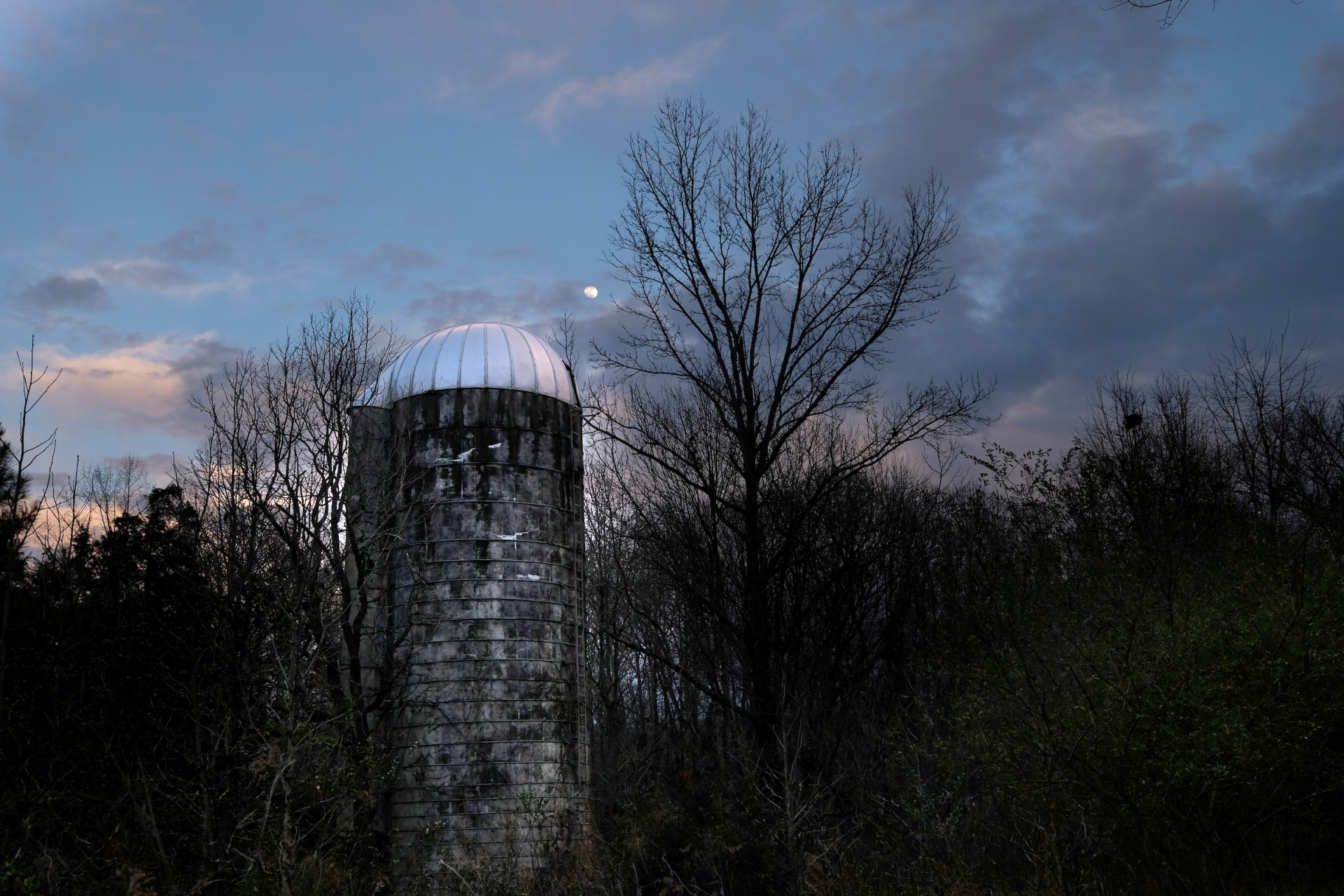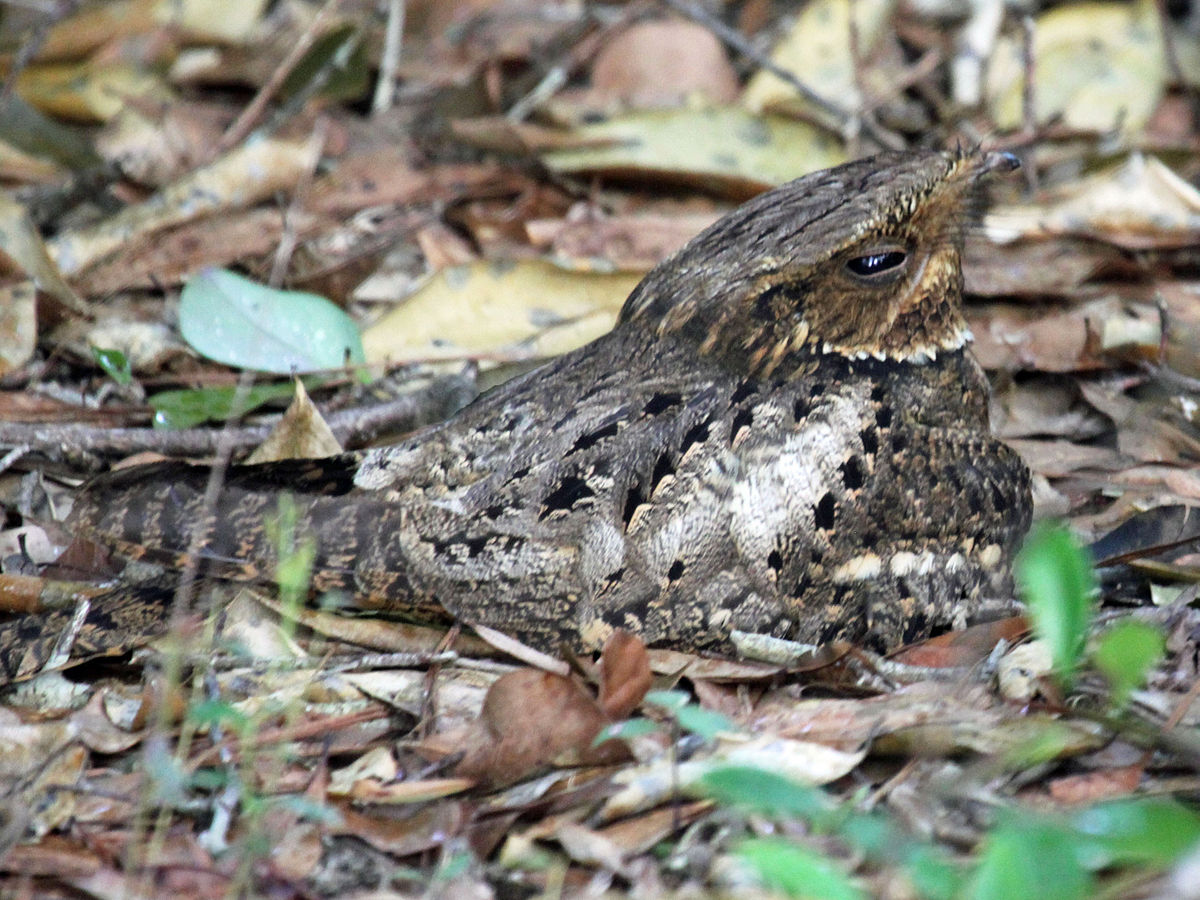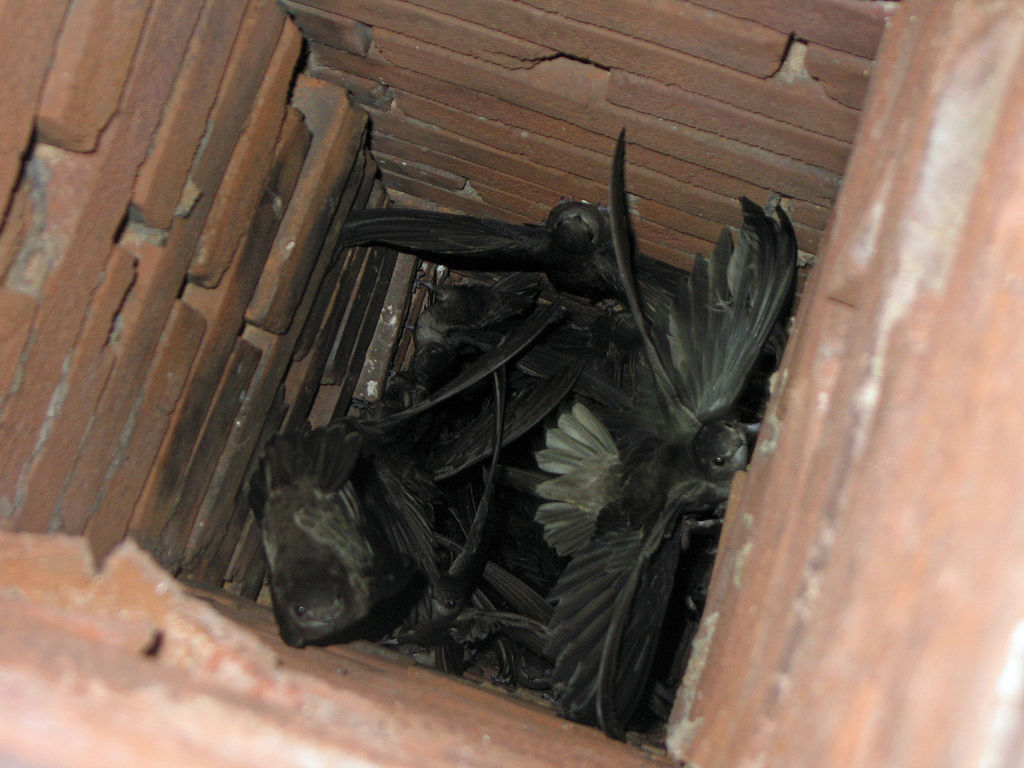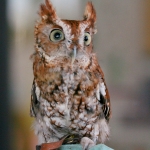At first, in the video it looks like smoke – but in an otherworldly twist, smoke that is descending into a chimney.
Then dark drift resolves into individuals and calls to mind a flight of bats. But the twittering mass whirlpooling down the school chimney is actually a flock of thousands of birds – chimney swifts.
These birds are lucky. Unlike so many of their fellow swifts, they’ve found an uncapped chimney in which to rest and gain strength for a long, exhausting migration ahead. They’re a rarity in the world of very specialized birds: A flock surviving despite radical changes to the landscape of the Carolina Piedmont.
“I mourn whenever I see development happen,” said Carol Buie-Jackson, who with her husband, Jay Jackson, owns birding supply store Birdhouse on the Greenway in south Charlotte. “I think about the birds that came through here last spring, and they come back through and say, ‘What the heck? There used to be a place to stop and eat right here,’ or ‘There used to be a wetland here.’ ”
Across the region, changes to lands and buildings are having a profound effect on the bird species – hurting some, such as swifts, and helping others. It’s testament to the ways in which birds’ futures and fortunes are inextricably twined with those of mankind.

The chimney swifts seen in the video clip shot by the Mecklenburg Audubon Society are seeking shelter on a journey that likely will take them from the eastern United States to the upper Amazon basin. Along the way the birds, whose bodies are shaped such that they cannot perch on a branch as other birds do, will seek out vertical roosting places to rest. Before Europeans landed in the New World, that would have meant cliffs or hollow trees. Modern development means the large, dead hollow trees in virgin forests are mostly gone. So for generations past counting, the birds have found safety and sleep in manmade chimneys.
But modern homes, if they have chimneys at all, have narrow ones capped at the top. The birds, adapted to one human landscape, are being undone as that landscape changes yet again. And their numbers are crashing: Across the nation since 1966, the swift population has plummeted 72 percent. The chimney at J.M. Alexander Middle School in Huntersville is one of the rare remaining large, uncapped chimneys in the area, places of refuge for birds classified as “near-threatened.”
As Mecklenburg and surrounding counties grow ever more developed, some bird species are winners. And some are losers. The winners tend to be the opossums of the bird world – birds that survive just about anywhere. The losers are specialists, such as the chimney swifts.
Or the barn owls. The ghostly white birds once ruled the night skies across Mecklenburg County’s farmland, elegant predators who kept rodents in check and who ornamented barns throughout the region. But the barns have mostly disappeared, and with them, the owls. Five years ago, the county had a single mated pair, living in a silo.
“We were all real excited about finding that pair,” recalled Don Seriff, a natural resources coordinator and supervisor with the Mecklenburg County Park and Recreation Department. But not long after, Seriff and his team returned to the site to a dismaying sight. “There was only one left of that pair, and the other one – we found its carcass dead at bottom of the silo.” The lone survivor, the final barn owl in Mecklenburg County, later disappeared.
Seriff knows intimately how the inhabitants of Piedmont skies are changing. Not only is he a serious birder and biologist, but Seriff also has supervised data collection for the Mecklenburg Breeding Bird Atlas, a project led by the Mecklenburg Audubon Society and the county natural resources department.
Seriff visited regional museums on his own time, examining stuffed specimen birds – a relic from the time when ornithologists tracked birds by shooting them. Then Seriff took off for Washington to a U.S. Department of Agriculture building where, stuffed in a closet, he found the data motherlode: More than 6 million little pieces of paper – individual, handwritten bird-sighting records. The records were sent by amateur naturalists for a federal bird-tracking program, going back more than a century.
The carefully penned lines from N.C. residents spoke of a place now lost, a region where Henslow’s sparrows and Bachman’s sparrows – now gone – flitted. A place where a Davidson college student in the late 1800s described thousands of now-extinct passenger pigeons flying overhead and roosting in trees near campus.
Today, the disappearances continue. Ken Kneidel, president of Mecklenburg Audubon Society, ticks down the list of the lost.
“We’ve lost bobwhites. They used to be common around farmland. Also, we’ve lost loggerhead shrikes and don’t see as many eastern meadowlarks as in the past. Both like grassy expanses,” he said. Farm pastures are disappearing, but grassy expanses still do exist. Golf courses, the airport – even Charlotte Motor Speedway can prove enough of a magnet to draw in meadow-loving birds, though few may stay to mate. But even the scraps of refuge can change, pushing out the birds.
Take those shrikes. A strange little bird that punches above its weight, the loggerhead shrike manages to bring down even small birds and voles, skewering its prey on sharp thorns or barbed wire fencing to save for later. Shrikes flourished when Mecklenburg County was still full of fields.
“The last pair we knew of was at the Starlight Movie Theatre (in northeast Charlotte),” Seriff said. “We lost that pair and now their habitat is a QT gas station.”
Even with all that is missing, the birds that remain remind the people who love them of what is possible.
Buie-Jackson recalled the year a bald eagle nested in the Piper Glen neighborhood, across the street from her store. “Bald eagles hadn’t been nesting in Mecklenburg County for decades,” she said. “We could see them with a spotting scope across from our store.”
And even dwindling tribes of swifts know how to put on a show. Buie-Jackson and her husband met friends at a Concord restaurant one evening late last summer and sat on the patio. Soon they noticed birds gathering. “I said, ‘Holy mackerel, those are chimney swifts!’ ” Buie-Jackson remembered. “In the entrance of that shopping center are two brick pillars and to the chimney swifts, they looked like a chimney. Literally like 40 feet away, hundreds of them start circling around, circling around, preparing to enter what they thought was a chimney – and it was magnificent.”
AS DEVELOPMENT CONTINUES SOME BIRDS ARE WINNERS, OTHERS LOSE
As people develop land and change their surroundings, some bird species are hurt and some are helped. Here are a few species directly affected by human-caused changes.
THE WINNERS
The biggest winners are all-purpose adapters – birds that can thrive in just about any landscape. They’re the ones you see commonly, such as house sparrows, wrens or titmice. But a few more unlikely species also have been attracted to the Charlotte region’s manmade landscapes, making them human-assisted success stories.
Lapland longspur
This striking bird spends summers in the Arctic tundra and winters in warmer regions. It’s a lover of grasslands, and managed to find what it needs in a seemingly unlikely spot: Charlotte Motor Speedway parking lots.
Peregrine falcon
You’re not going to see many of these sleek raptors, but a few have been drawn to Charlotte’s uptown skyscrapers, which mimic the cliffs the falcons love. They’ll dazzle onlookers with their stunning descents onto their prey, typically small birds.
Brown-headed nuthatch
It’s probably too soon to call this struggling species a true “winner,” but Mecklenburg-area residents have rallied behind the tiny tree climber that makes a sound like a squeak toy. Hundreds of nuthatch boxes have been built and installed on county and private land in recent years, as residents strive to make up for the loss of the pine trees upon which this southeastern U.S. species depends. The tiny bird still needs help.
Common raven
Cliff-nesting ravens probably wouldn’t have come to Mecklenburg and the surrounding counties but for one manmade feature: Quarries. “They nest on the rock faces,” said Ken Kneidel, president of the Mecklenburg Audubon Society. The raven is a comeback story, a bird that hasn’t bred in the county for 100 years, said Don Seriff, Mecklenburg County natural resources coordinator and supervisor.
Eastern bluebird
In steep decline in the 1960s, the bluebird’s population has rebounded to unprecedented levels, thanks in large part to an outpouring of support for the bird and a national campaign to construct bluebird nest boxes. Once a rarity, the bluebird’s cobalt flight is a common sight throughout the region.
THE LOSERS
Specialists struggle to adapt to changes in the landscape, and when their particular habitat is paved over, they have nowhere to go. Cavity nesters, which rely on large, dead trees in which to build homes, are particularly vulnerable, as are species that need “early successional” habitat – the kind of shrubby edges that used to separate farm from forest.
Barn owls
Beautiful, white birds that once haunted barns, empty textile mill buildings and other quiet structures, the barn owls are now gone from Mecklenburg County. Don Seriff, conservation biologist for Mecklenburg County, found the body of one of the last two barn owls in the county; its mate disappeared.

Chuck will’s widow
Chuck will’s widow – named for the sound of its lilting call – is a cousin to whippoorwill. These insect eaters, which prefer edges between forest and fields, haven’t nested in the area for perhaps 10 years, Seriff said. “A lot of these insect-eating birds are in serious decline, and people are questioning whether it’s tied to overuse of pesticides.”
Eastern screech-owls
A pint-sized owl with a mighty cry, the screech-owl is hurting because the places it needs to raise its owlets – large, dead trees – are disappearing as woods get cut for development. Cavity nests are “prime real estate,” Seriff said. So many species depend on them that the few available are in high demand. Eastern screech-owls are willing to nest in specially built boxes, so human intervention may be able to play a part in bringing them back.
Kentucky warblers
This forest species loves bottomlands, which might seem lucky for Mecklenburg, necklaced as it is with creekside floodplains. “The greenways would be good but they’re not big enough,” Seriff said. Just one spot in the area still has the yellow and olive bird with a black mask: a property south of Charlotte that’s protected by the Catawba Lands Conservancy.

Chimney swifts
Swifts need open, uncapped chimneys for resting en route to South America in late summer and early fall. During breeding season, a swift pair will build a nest in the chimney, using tiny twigs cemented to the side with saliva. New efforts are underway to save this sinking species: Experts are urging homeowners to uncap their chimneys (leaving the damper and fireplace doors shut will keep birds out of the house). And swift towers, structures shaped like chimneys, are being constructed as safe havens on county-owned and private land. Swift towers likely are coming to Selwyn Elementary school, Clark’s Creek Nature Preserve, Kilborne Park, and Colonel Beatty Park.
WHAT CAN WE DO?
“We’ve put a lot of bird populations in peril, but there’s a lot you can do to help,” said Carol Buie-Jackson, co-owner of Birdhouse on the Greenway and herself a birder. A few ideas from Buie-Jackson and other experts:
- Uncap your chimney. Keep the damper shut and doors on the fireplace closed. Chimney swifts may use your chimney as a much-needed resting spot as they migrate.
- Plant native plants. Natives are food for the kinds of insects and caterpillars on which so many songbirds rely during breeding season, when the need for high-energy foods is critical.
- Reduce or eliminate chemical sprays. They tend to kill all insects, eliminating food sources for birds.
- Install nest boxes, paying close attention to the kind of box and location needed by the species you’re targeting.
- Donate to land conservation. Backyards can do a lot, but birds need sizeable swaths of habitat, and your dollars can help preserve for them an oasis in a sea of development.







